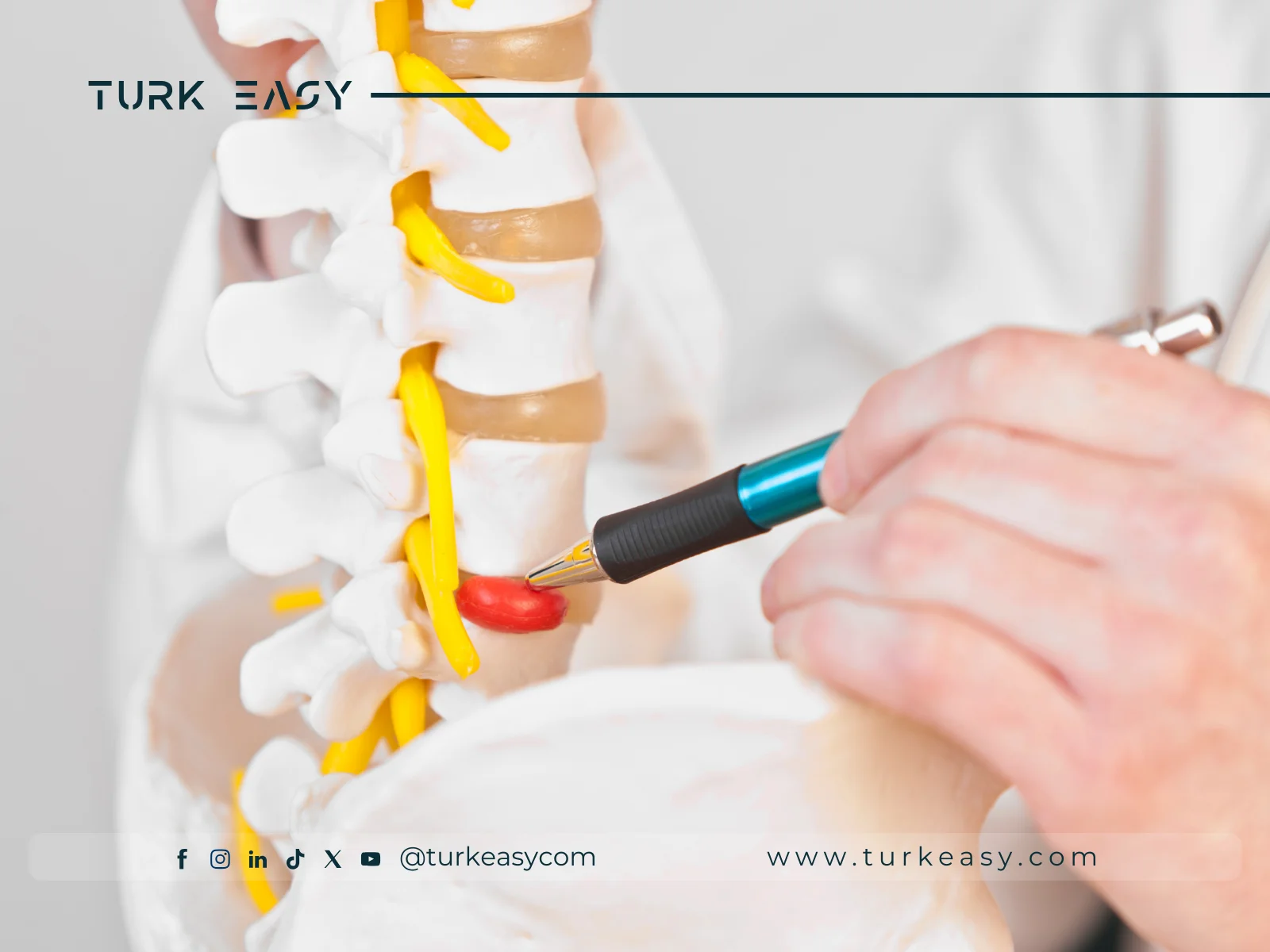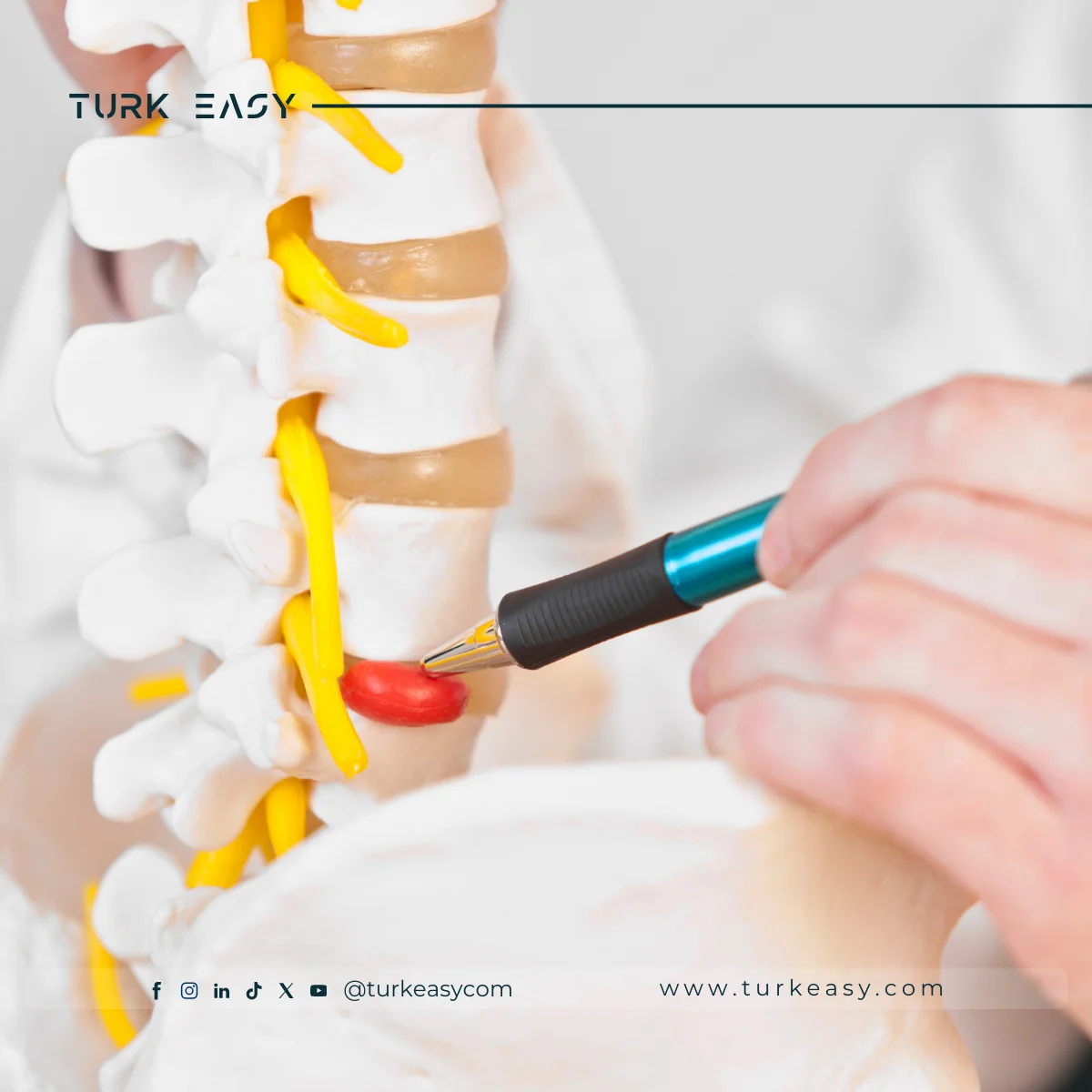Lumbar Disc Herniation Surgery
Lumbar disc herniation is defined as the protrusion of the material located in the rings or discs of cartilage between the vertebrae of the spine. This viscous material helps absorb shocks that occur to the spinal column. When there is a tear in the fibers of the cartilage rings, it leads to pressure on the nerves in the spinal canal, accompanied by severe pain depending on the affected area of the spine.
What are the surgical methods for lumbar disc herniation?
- Endoscopic Surgery
- Microscopic Techniques
- Open Disc Removal
- Microscopic Disc Method
- Artificial Disc Surgery
- Laser Surgery in Simple Cases
Artificial Disc Surgery
In this procedure, the surgeon replaces damaged tissues and uses artificial parts, consisting of a metal piece with a rubber part, which functions like natural cartilage discs. The patient is fully anesthetized, then a small incision is made in the area of the herniated disc, and the duration of the operation varies between two to three hours depending on the degree of herniation. The patient can be discharged from the treatment center after a week of undergoing herniated disc surgery, with activities resumed within three months.
Microscopic Surgery
Microscopic surgery is used to treat lumbar disc herniation. The microscope is directed at the tissues to be dealt with, magnifying them, then the doctor makes a small incision in the skin and removes the fibrous tissues. Among the advantages of this method are that the doctor does not need to make a large incision, nor does it affect healthy tissues during surgery. Also, the pain after the operation is much less than with open surgery, and the recovery period is limited.
Open Surgery
The patient undergoes general anesthesia when performing open surgery for lumbar disc herniation, where the surgeon creates an incision of 3-4 cm in length at the hernia, with deep dissection of the tissue below the skin at the affected vertebrae or vertebra. Then, fibrous tissues and damaged cartilage between the vertebrae are removed, and the nerves are released from pressure, after which the surgeon closes the wound.
Laser Surgery
Laser surgery is one of the modern options among the types of lumbar disc herniation surgery. The entire surgery is monitored through the laser, where the doctor starts by making a very small incision in the area of pain, and then the site to be treated is imaged on a screen through the laser. This procedure can be performed under local anesthesia. Patients can be allowed to leave on the same day of the surgery.



